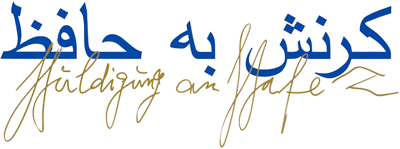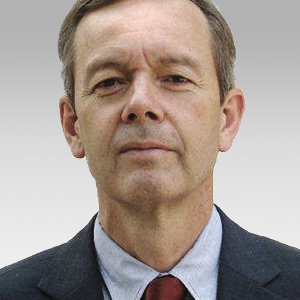“Who knows himself and others, will be recognise: Orient and Occident are not dividable any more.”
Michael von Ungern-Sternberg
Former Ambassador of the Federal Republic of Germany to Iran
What significance for the present time can a sentence have written 200
years ago:
Who knows himself and others, will be recognise:
Orient and Occident are not dividable any more.
This poem snippet could have originated from the present. But it is a quotation from Johann Wolfgang Goethe’s “West-Eastern Divan” from the year 1819. The sentence contains much of what culture and art can achieve, and probably have to achieve. In times of globalisation and technical progress the world has moved closer together. Regions that still appeared far from us some decades ago today seem close, and events and developments in one part of the world can soon affect another part. Consequently, how good and important is it to know yourself and others. To develop an understanding for other cultures, to get to know backgrounds and to understand traditions and customs that allow conclusions about human behaviour and also present politics. This is only possible if one approaches people of a different culture. If one engages oneself. Not heavy with prejudice but with curiosity. And the reaction of one’s counterpart will show that already a little more interest and understanding evoke the trust that makes interaction possible, and represents a chance to meet challenges together.
Cultural exchange is able to develop this understanding on all sides. The exhibition this book is dedicated to is a wonderful example for how cultures can mutually inspire each other. 2012 Günther Uecker had the possibility to exhibit in Iran as one of the first Western artist since 1979. The exhibition was a huge success. Not only that German culture had the possibility to present itself at a global level and inspire Iranians, but at the same time Günther Uecker found his own inspiration: By Iran that he travelled, and by the culture that has been shaping the country for centuries and is still very present for its inhabitants today. At the same time, however, Iranians cultivate a strong and creative cultural scene that looks ahead and towards other cultures without forgetting its own roots.
Since Uecker’s exhibition in the year 2012 much has changed in Iran’s cultural scene. Exhibitions of Western Artists are not unusual anymore, experimentation with new art forms take place, and the old masters are proudly celebrated. Iran presents itself as the country it is: a country of high culture, a country with people who are open for innovation and looking for an exchange with the world. During the last couple of years German culture has succeeded to serve the curiosity and
openness of the Iranian people with diverse projects in the fields of art, music and theatre. And, of course, the wish always prevails that the German artists who dwell in Iran take something home from their journeys, that something arises from their sojourns, and that German cultural work is not a one-way street. This exhibition is a prime example for that.
The attraction of the great Persian poet Hafes especially on German culture is well-known in both countries, mainly due to Goethe’s “West-Eastern Divan”, a collection of poetry inspired by Hafes. But also the poet Friedrich Rückert shortly after Goethe successfully received Hafes in his poetry collection “Eastern Roses” and, thus, introduced Hafes’ verses to a German audience. And now Günther Uecker who, different from Goethe and Rückert, had the possibility to get to know Iran and her people. An experience that apparently was so intense that Uecker had to express this inspiration through his own art. As Goethe and Rückert before him, he could not withdraw from Hafes.
When we see the fruits of this mutual inspiration in this book and the exhibitions in Shiraz and Tehran it fills me with great joy. Firstly, because the Hafes quotations chosen by Uecker as well as Uecker’s art are beautiful. On the other hand, because they function together so harmonically and merge into one work of art as though they had always been united. In the moment of observation it is no longer detectable that the roots of Uecker and Hafes lie thousands of kilometres and more than 600 years apart – neither is it relevant. What is important is that inspiration and understanding have flown in two directions and therefore something new has originated that, again, can give rise to inspiration, and hopefully will do so. During the last couple of months Iran has paved the way towards a political and economical opening of the country. Today, however, political and economical rapprochement is not possible anymore without the support of an exchange in the fields of culture and science. Only holistic cooperation in all fields can ensure the establishment of a strong partnership for the long term to effectively and comprehensively approach challenges and resolve them.
This exhibition will contribute another little part to a rapprochement between Iran and Germany. It is another bridge between our countries, between the people of both countries who can meet on these bridges, join hands and get to know each other. As confirmed by Goethe when he, inspired by Hafes, was writing the lines above.

